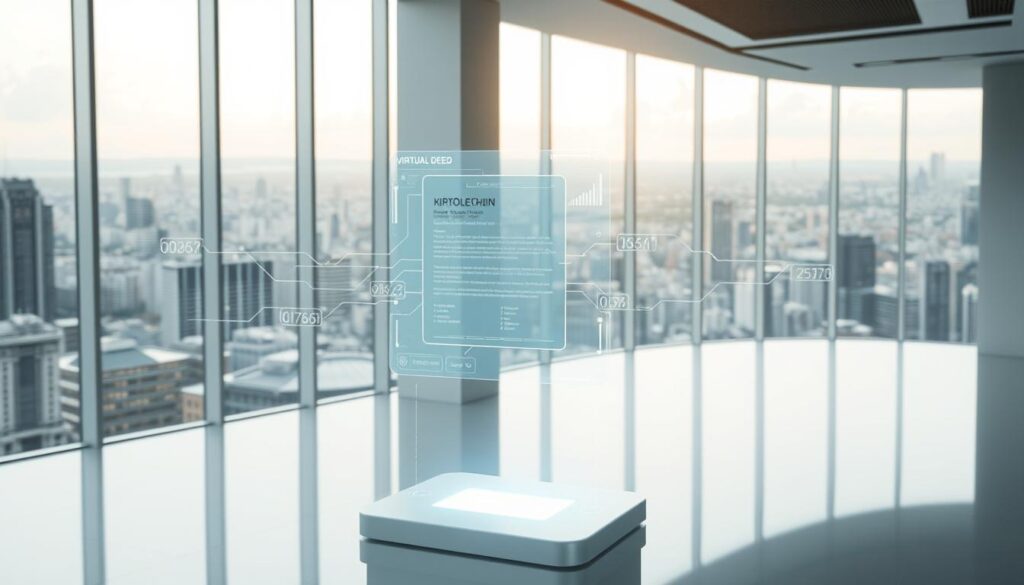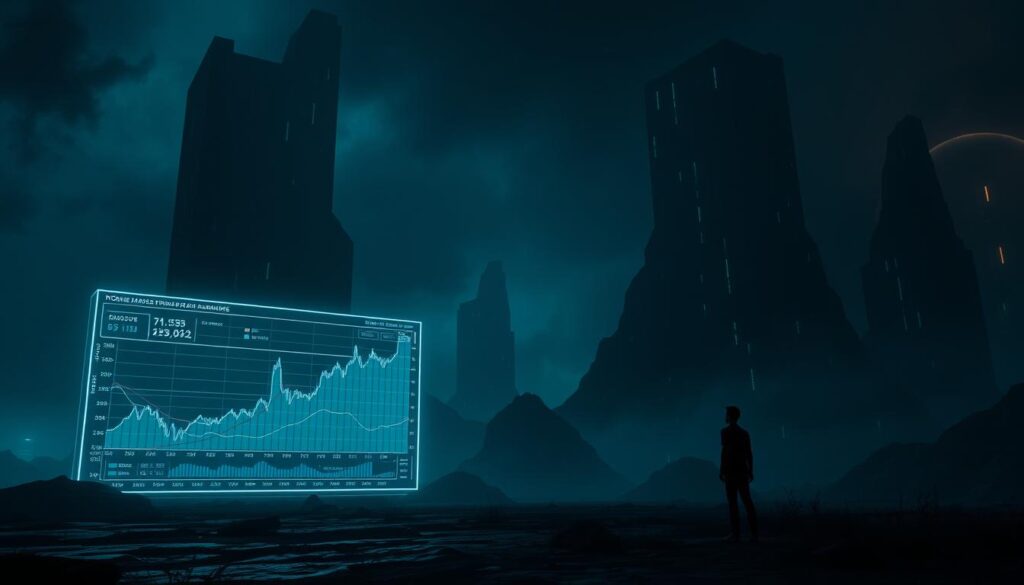Digital landscapes are reshaping how we think about property and ownership. Tech giants like Meta and Microsoft have poured over $79 billion combined into creating immersive environments where users interact, work, and play. These spaces aren’t just for gaming—they’re becoming hubs for commerce and creativity.
Industry analysts predict explosive growth for this sector, with projections showing a 39.1% annual expansion rate. By 2030, the market could surpass $800 billion in value. Over 400 million people already engage with these platforms, while 500+ companies develop tools and experiences for this new frontier.
Ownership in these environments works through blockchain-backed tokens, allowing secure transactions and verifiable rights. Investors can acquire parcels, develop structures, or lease spaces—mirroring traditional property strategies but with digital flexibility. Revenue streams range from advertising to hosting virtual events.
Key Takeaways
- Major tech firms have invested billions to build next-gen interactive platforms
- Digital property markets could grow nearly 40% annually through 2030
- Blockchain technology ensures transparent ownership records
- Over 400 million active participants drive economic activity
- Diversification opportunities exist beyond physical land investments
- Revenue models include leasing, advertising, and experiential monetization
Overview of the Metaverse and Digital Real Estate Trends
Modern immersive spaces are redefining human interaction through cutting-edge interfaces. Advances in sensory technology now let users touch, hear, and see digital elements with startling clarity. This progress transforms how businesses and creators engage global audiences.
https://www.youtube.com/watch?v=vsJpvAYnewM
Next-Gen Sensory Interfaces
Augmented and virtual reality tools now respond to gestures and voice commands. High-definition displays and haptic feedback systems create lifelike simulations. These innovations bridge gaps between physical and digital experiences, enabling collaborative workspaces and interactive learning platforms.
Capital Flows Into New Frontiers
Investments in immersive platforms surged 240% since 2021, driven by corporate and individual interest. Blockchain integration ensures transparent virtual land ownership records, reducing fraud risks. Analysts note growing demand for event venues and retail spaces within these ecosystems, mirroring real-world economic patterns.
Artificial intelligence enhances user customization, adapting environments to individual preferences. This synergy between AI and spatial computing unlocks automated management solutions for digital properties. As adoption grows, these systems could reshape how we perceive value in interconnected worlds.
Understanding the metaverse NFT virtual real estate marketplace
Decentralized ecosystems offer new avenues for owning and trading assets. These platforms act as hubs where unique digital assets change hands through blockchain-backed transactions. Unlike traditional systems, every exchange is recorded permanently, creating an unbreakable chain of ownership history.

Users navigate these spaces using immersive 3D tools to explore properties. They can inspect neighborhoods, test development ideas, or compare traffic patterns—all before committing funds. Popular locations include event arenas, retail districts, and creative zones tailored for specific activities.
Peer-to-peer interactions define these environments. Buyers connect directly with sellers, negotiating terms without brokers. Payments occur through cryptocurrency wallets, enabling instant global transactions. This system supports everything from small residential plots to large commercial developments.
Ownership rights are secured through non-fungible tokens, which act as digital deeds. Each token contains details about the asset’s location, size, and usage rules. This framework allows investors to build, lease, or resell properties while maintaining full control over their portfolios.
The Digital Transformation of Real Estate Investing
Property ownership models are evolving through advanced digital frameworks. Secure ledger systems now authenticate transactions and verify holdings with precision. This shift introduces opportunities for fractional investments and automated management tools.
Blockchain and Ownership Rights
Distributed ledger technology creates tamper-proof records for every transaction. Each parcel’s history—from sales to leases—is stored across multiple nodes. This approach eliminates boundary disputes and forgeries common in traditional systems.

Tokenization and Non-Fungible Tokens Explained
Unique digital certificates convert properties into tradeable assets. These tokens enable:
- Partial ownership of high-value locations
- Instant transfers through smart contracts
- Custom usage rules encoded directly into assets
Investors gain flexibility to buy, sell, or lease fractions of properties globally. Automated agreements handle payments and access permissions, reducing administrative costs.
Exploring Virtual Land and Property Investment
Interactive digital spaces are creating unprecedented opportunities for investors and creators. These environments blend commerce, social interaction, and artistic expression in ways physical locations can’t match. Ownership extends beyond static plots to dynamic platforms where value grows through user engagement and innovation.
Unique Features of Digital Real Estate
Programmable spaces let owners craft experiences limited only by imagination. Structures can morph into concert venues by night and coworking hubs by day. Gravity-defying architecture and instant teleportation features redefine what “location” means in these ecosystems.
Global access removes geographical barriers—a Tokyo-based investor can develop property visited by users worldwide. Dynamic environments adapt automatically, adjusting lighting, layout, or interactive elements based on real-time data. This flexibility creates value that traditional real estate can’t replicate.
Comparing Conventional and Virtual Properties
Physical buildings require permits and contractors, while digital structures deploy with code. Transactions use cryptocurrencies instead of bank loans, completing in minutes rather than months. Ownership verification happens through blockchain records instead of paper deeds.
Value drivers differ significantly. A bustling virtual retail zone might draw value from avatar foot traffic and event partnerships. Physical properties rely on neighborhood schools or transport links. Both markets reward strategic vision but demand distinct skill sets for success.
Getting Started with Virtual Real Estate Investments
Entering the world of digital property ownership requires foundational tools and strategic planning. Secure access points and platform knowledge form the bedrock of successful transactions in these evolving spaces. Let’s break down the essentials for building your portfolio.

Setting Up Your Crypto Wallet and Accounts
Begin by selecting a reliable wallet that supports blockchain transactions. Top choices like MetaMask and Binance offer compatibility with multiple networks. Always verify platform-specific currency requirements—some accept Ethereum, while others need native tokens like SAND.
Account creation typically involves three steps:
- Complete identity verification
- Connect your wallet
- Explore browsing tools
Choosing the Right NFT Platforms
Evaluate marketplaces based on four key factors:
| Feature | Importance | Example |
|---|---|---|
| Transaction Fees | Impacts ROI | 2-5% per sale |
| User Interface | Eases navigation | 3D property previews |
| Community Size | Drives demand | 10k+ active users |
| Security Protocols | Protects assets | Two-factor authentication |
New investors should test free environments before committing funds. Analyze traffic patterns and development potential in target zones. This approach reduces risk while building operational familiarity.
Evaluating Investment Risks and Challenges in the Metaverse
Digital asset markets face unique pressures that demand careful analysis. Rapid price swings and shifting user behaviors create unpredictable conditions for property holders. These challenges require investors to balance innovation awareness with risk management strategies.

Price Swings and Speculative Pressures
Value fluctuations in digital spaces often outpace traditional markets. A single platform update or tech advancement can trigger 50% price changes within days. The Sandbox platform illustrates this volatility—properties plummeted 95% from 2021 peaks.
Three primary factors drive this instability:
- Speculative trading patterns
- Evolving platform popularity
- Regulatory uncertainties
| Platform | Peak Value | 2024 Value | Drop |
|---|---|---|---|
| The Sandbox | 2.86 ETH | 0.13 ETH | -95% |
| Decentraland | 5.8 ETH | 1.2 ETH | -79% |
| Otherverse | 3.1 ETH | 0.9 ETH | -71% |
Governments haven’t established clear tax rules or ownership protections for these assets. Tech risks also loom—platforms might become obsolete if user interest fades. Security breaches could wipe out entire portfolios overnight.
Smart investors limit exposure to these markets. Experts recommend allocating under 5% of total assets to digital properties. For those exploring this space, strategic approaches to metaverse investments can help mitigate downside risks while capturing growth potential.
Market Analysis: Trends, Growth, and Future Projections
Emerging digital economies are rewriting the rules of value creation. Analysts forecast seismic shifts in how global markets operate, driven by next-gen platforms blending commerce with immersive experiences. Recent data reveals a 39.1% compound annual growth rate for this sector through 2030, with valuations potentially exceeding $800 billion.
CAGR and Statistical Insights
Three factors propel this expansion: surging user engagement surpassing 400 million participants, blockchain-based ownership models ensuring transparency, and diversified revenue streams from advertising to experiential events. Platforms attracting creators and businesses see the fastest development, with prime locations appreciating 200-300% annually in active ecosystems.
Effects of Tech Giants on the Market
Corporate investments exceeding $79 billion from industry leaders accelerate platform development. These companies shape digital ecosystems through advanced tools for 3D design and AI-driven personalization. Their involvement attracts mainstream users while setting interoperability standards across environments.
As infrastructure improves, expect tighter integration between physical services and digital spaces. Early adopters leveraging data-driven strategies position themselves to capitalize on this trillion-dollar convergence.


No comments yet